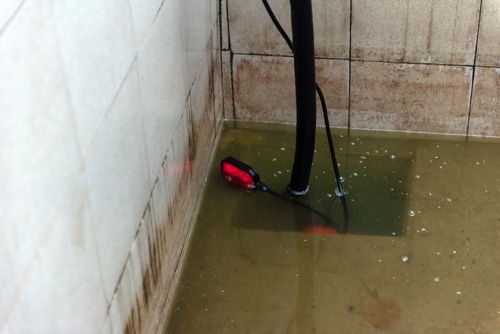Quick and Effective Water Damage Elimination Solutions for Any Type Of Building
In the face of water damage, swift and efficient options are paramount to secure the honesty of any building. By employing a careful strategy that encompasses assessment, extraction, removal, and remediation, one can navigate the intricacies of water damages removal with finesse. The journey in the direction of detailed water damages solutions begins with comprehending the detailed steps included in securing any kind of residential or commercial property from prospective destruction.
Evaluating the Degree of Damages
Upon coming across a water-damaged location, the first step in the remediation process is to carefully evaluate the extent of the damage to identify the essential training course of action. This evaluation is critical as it lays the foundation for the whole repair procedure. Specialists generally carry out a thorough inspection to review the influenced locations, determining the source of the water intrusion and classifying the water damages based on industry criteria.
During the assessment, specialists try to find visible signs of damages such as water spots, mold growth, and architectural weaknesses. They also make use of customized devices like moisture meters and thermal imaging electronic cameras to find concealed moisture pockets within wall surfaces, ceilings, and floors. By recognizing all areas impacted by water damages, experts can create a detailed plan describing the actions required to recover the residential property to its pre-damaged condition.
In addition, assessing the level of the damages enables restoration teams to focus on tasks, allot resources effectively, and offer exact cost quotes to the home owner. This preliminary evaluation sets the phase for a successful water damages repair procedure, guaranteeing a comprehensive and reliable service customized to the particular needs of each circumstance.

Water Removal and Drying Out Strategies
After finishing a comprehensive evaluation of the water damages and recognizing all influenced areas, the following vital action in the remediation process involves implementing water removal and drying out methods. Water extraction is important to remove standing water rapidly and efficiently from the home. This process usually involves using effective pumps and vacuum cleaners to remove huge amounts of water. When the bulk of the water has been gotten rid of, the drying out process begins. Drying techniques such as dehumidification and air flow are employed to eliminate excess dampness from the air and surfaces. Dehumidifiers are especially helpful in decreasing humidity degrees, avoiding mold development, and speeding up the drying procedure.
Moreover, customized equipment like air movers and heating systems may be used to boost the evaporation of water from carpetings, walls, and furnishings. It's vital to monitor the drying development continually to ensure that all wetness is successfully gotten rid of, preventing additional damage such as mold and mildew and architectural concerns. Proper water extraction and drying methods are crucial in restoring the residential property to its pre-damaged problem efficiently and efficiently.
Mold And Mildew Avoidance and Removal Methods
Executing reliable mold and mildew prevention and removal approaches is critical in making sure the long-lasting health and wellness and architectural honesty of a residential property adhering to water damages. Mold and mildew can start expanding within 24-48 hours after water exposure, posturing major health risks and causing more damages to the home if left untreated. To avoid mold growth, it is necessary to promptly address any kind of water leakages or flooding, completely dry affected locations, and lower humidity levels listed below 60%.

Structural Repairs and Repair
Offered the critical relevance of dealing with mold and mildew problems quickly to guard residential property honesty and resident health and wellness, the emphasis currently changes to the important facet of architectural repair work and reconstruction. Once water damages has actually endangered the structural honesty of a property, quick activity Read Full Report is imperative to avoid additional damage.
Professional repair firms employ specific devices and strategies to effectively resolve architectural issues brought on by water damages. These specialists have the know-how to recognize surprise damage, create an extensive reconstruction plan, and carry out repair work successfully. Architectural repairs are not only important for making certain the safety and stability of the residential property yet additionally for protecting against long-term problems like mold and mildew growth and decay.
Carrying Out Long-Term Avoidance Procedures
To ensure the long-term security of a residential or commercial property from water damage, positive steps need to be executed. One essential step is normal upkeep of the building's plumbing and roof covering to avoid leaks and water infiltration. Examining and repairing any kind of splits or voids in the walls, windows, and foundations can additionally assist in maintaining water out. Setting up proper water drainage systems such as rain gutters and downspouts to direct water away from the residential or commercial property is vital. Furthermore, landscaping needs to be graded far from the structure to stop water from pooling near the foundation. Making use of waterproofing sealants on at risk surface areas like cellars and crawl spaces can supply an added layer of defense. It is suggested to have a specialist conduct an extensive inspection of the residential property to identify possible problem locations and suggest appropriate preventative measures. By executing these long-lasting prevention procedures, homeowner can significantly original site reduce the risk of water damages and shield their financial investment for years ahead.
Conclusion
In verdict, it is critical to immediately evaluate and address water damages in order to avoid more concerns such as mold development and structural damage. By making use of efficient water removal, drying out techniques, mold and mildew prevention approaches, and architectural repair work, home proprietors can alleviate the long-lasting effects of water damages. Carrying out proactive avoidance procedures can assist guard residential or commercial properties versus future water damage occurrences.